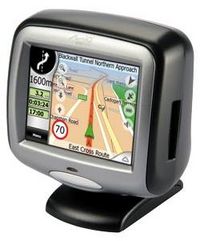Portable Navigation Device Vendors Seek Differentiation in Non-Traditional Designs
NEW YORK--Faced with razor-thin margins on devices that sell for as little as $200, portable navigation manufacturers are looking to differentiate themselves at the more profitable high end. According to ABI Research principal analyst Dan Benjamin, “In the near future, high-end navigation products will need increased capabilities from the hardware, better connectivity, more varied data, and more powerful functions.”
“Nontraditional” is the word to describe the new breed of GPS-enabled devices which includes both Ultra-Mobile Personal Computers (UMPCs) and smartphones. In a new Research Brief, “In-Vehicle Computing and Converged Phone Navigation”, ABI Research forecasts the market for non-traditional navigation — including navigation-specific connected devices, navigation-bundled UMPCs, car computers, and aftermarket wireless-driven thin-client navigation systems — to grow to nearly 4 million units annually by 2011.
These new devices’ network-connected features, the need for more advanced graphics processing, and the addition of access to contextual information – for example traffic conditions, travel advice or entertainment information – mean new form factors that take increased processing requirements and more detailed 3D display into account. ABI Research foresees the lion’s share of this growth coming as a product of carrier launches of GPS-enabled smartphones or connected devices offered at the high end of the conventional portable navigation range.
“The revenue model has yet to be sorted out.” notes Benjamin. “But while TomTom, Garmin and Dash Navigation – with its ability to tie in local search – are currently leading the way in North America and Europe, with the next-generation hardware, many companies are going to be able to implement similar features.”
The real question is the levels of data that are being delivered, Benjamin adds. “There’s a large amount of data that can be used to increase the usability, functionality, and experience of the device, but that data is very hard to come by. It’s a slow process: we need persistent data in the form of renderings of buildings, and descriptions of what’s in the streets, and we also need real-time data such as traffic information, prices, shopping, and entertainment.”



